In the realm of fitness, the quest for muscle growth is a journey as old as time itself. With countless approaches, methodologies, and philosophies on the market, discerning which exercises truly stand the test of strength can feel overwhelming. Whether you are a seasoned athlete or just embarking on your fitness adventure, the foundation of muscle building lies in the perfect blend of knowledge and action. From the stabilizing power of compound movements to the precision of isolation exercises, each option offers a unique pathway to sculpting the physique you desire. in this article, we will explore the best exercises for building muscle, providing you with a comprehensive guide to enhance your training routine.Prepare to embark on a transformative journey that not only challenges your body but also fortifies your dedication to health and fitness.
Table of Contents
- Understanding Muscle Hypertrophy and Its importance
- Foundational Compound Exercises for Maximum Gains
- isolation Movements and Their Role in Muscle Building
- The Power of Progressive Overload in Your Routine
- Tailoring Your Workout Frequency for Optimal Results
- nutrition essentials to Complement Your Exercise Regimen
- Incorporating Rest and Recovery for Muscle Growth
- Adapting Your Routine for Different Fitness Levels
- Exploring Advanced Techniques for Experienced Lifters
- Staying Motivated: The Psychological Aspect of Building Muscle
- Q&A
- The Conclusion

Understanding Muscle Hypertrophy and Its Importance
Muscle hypertrophy refers to the process of increasing the size of muscle fibers, which occurs primarily in response to resistance training. This physiological adaptation is not merely about aesthetics; it plays a crucial role in enhancing overall functionality and performance. Engaging in specific exercises that promote hypertrophy can lead to improved strength, endurance, and metabolic health, making it a fundamental goal for fitness enthusiasts and athletes alike.
When pursuing hypertrophy, understanding the types of muscle fibers involved is essential. There are two main types: Type I fibers (slow-twitch) and Type II fibers (fast-twitch). Type I fibers are endurance-oriented, while Type II fibers are geared towards strength and power. The right combination of exercises can stimulate both types, fostering balanced muscular progress. Focusing on heavier weights with lower repetitions can particularly engage Type II fibers, while moderate weights with higher repetitions can benefit Type I fibers.
Moreover, the principle of progressive overload is a key driver of muscle growth. It involves gradually increasing the weight, volume, or intensity of your workouts to continue challenging your muscles.This not only spurs on hypertrophy but also prevents plateaus in training. By consistently adapting your workout routine, your muscles receive the stimulus they need to grow and strengthen over time.
The role of nutrition cannot be understated in this context. A diet rich in essential nutrients, particularly protein, aids in recovery and muscle repair. To optimize muscle growth, incorporating the following can be beneficial:
- Lean proteins such as chicken, turkey, and legumes
- Complex carbohydrates like brown rice, quinoa, and sweet potatoes
- Healthy fats from sources like avocados and nuts
rest is a crucial component of the hypertrophy equation. Muscles need time to recover and grow stronger after the stress of workouts. Prioritizing adequate sleep, along with incorporating rest days into your training program, fosters an surroundings where hypertrophy can thrive. By balancing exercise, nutrition, and recovery, individuals can enhance their muscular development and overall performance effectively.

Foundational Compound Exercises for Maximum Gains
When it comes to building muscle effectively,nothing beats the power of foundational compound exercises. These movements engage multiple muscle groups concurrently, promoting overall strength and muscle growth more efficiently than isolation exercises. Think of them as the cornerstone of your training program that provides immense value in terms of muscle development and functional strength.
Squats are often hailed as one of the best lower body exercises. They target your quadriceps, hamstrings, glutes, and even engage your core.Performing squats not only builds muscle but also enhances your athletic performance. Whether you choose to perform them with free weights, a barbell, or your body weight, squats set the stage for extraordinary strength gains.
Deadlifts are another powerhouse movement that should not be overlooked. they work your back, glutes, hamstrings, and core all at once. The versatility of deadlifts, with variations like conventional, sumo, and Romanian deadlifts, allows you to challenge different muscle groups while maximizing your overall strength and conditioning. Engaging in this exercise regularly can lead to significant progress in muscle growth.
Bench Press is often deemed the king of upper body exercises. By targeting the chest, shoulders, and triceps, the bench press builds a strong upper torso essential for both aesthetic and functional strength. Incorporating variations like incline and decline bench press can help you hit different angles of the muscle, ensuring a well-rounded upper body workout.
| Exercise | Primary Muscle Groups |
|---|---|
| Squats | Quadriceps,Hamstrings,Glutes |
| Deadlifts | Back,Glutes,Hamstrings |
| Bench Press | Chest,Shoulders,Triceps |
Lastly,the Overhead Press completes this powerful quartet. This exercise targets the shoulders, triceps, and engages the core, promoting functional strength that is invaluable in many daily activities.As you progress, increasing the weight and intensity of your overhead presses can further challenge your muscles and ignite growth, solidifying your stature as a well-rounded lifter.

Isolation Movements and Their Role in Muscle Building
Isolation movements are vital components of a well-rounded muscle-building regimen. Unlike compound exercises,which engage multiple muscle groups,isolation movements focus on a single muscle group. This specificity allows bodybuilders and fitness enthusiasts to enhance the definition and strength of particular muscles, making them crucial for achieving a balanced physique. By isolating muscles, individuals can target and improve weak points in their training, thereby promoting symmetrical growth and development.
One of the most significant advantages of isolation exercises is their ability to create a deeper mind-muscle connection. When performing isolation movements, lifters can concentrate fully on the target muscle, paying attention to how it feels during the contraction and extension phases of the exercise. This heightened awareness can lead to more effective workouts, as individuals are better able to engage the muscle fibers necessary for growth. Ultimately, this connection not only enhances muscle activation but also elevates overall performance.
Key isolation exercises often include:
- Bicep Curls: targeting the biceps brachii, these are foundational for arm development.
- Tricep Extensions: Essential for strengthening the triceps, contributing significantly to overall arm size.
- Leg Extensions: Primarily focuses on the quadriceps, ideal for sculpting the front of the thighs.
- Hamstring Curls: Designed to isolate the hamstrings, complementing leg day routines.
- Chest Flyes: Aimed at the pectorals, enhancing the width and shape of the chest.
To maximize gains from isolation movements, it is indeed crucial to integrate them strategically into workout schedules. Pairing isolation exercises with compound lifts can definitely help ensure muscle fatigue while promoting recovery across muscle groups.As a notable example, performing a set of squats followed by leg extensions allows muscles to work synergistically, ultimately enabling individuals to lift heavier weights and stimulate muscle growth. This balanced approach fosters an environment conducive to muscle repair and development, paving the way for optimal results.
It’s also essential to maintain proper form during isolation exercises to prevent injury and enhance effectiveness. Slip-ups in technique can lead to muscle imbalances or strains,hindering progress.Keeping movements controlled and using a full range of motion ensures maximum muscle engagement.Setting up a consistent routine that incorporates both isolation and compound exercises will lead to impressive gains in strength and aesthetics,underscoring the value of these movements in any muscle-building program.
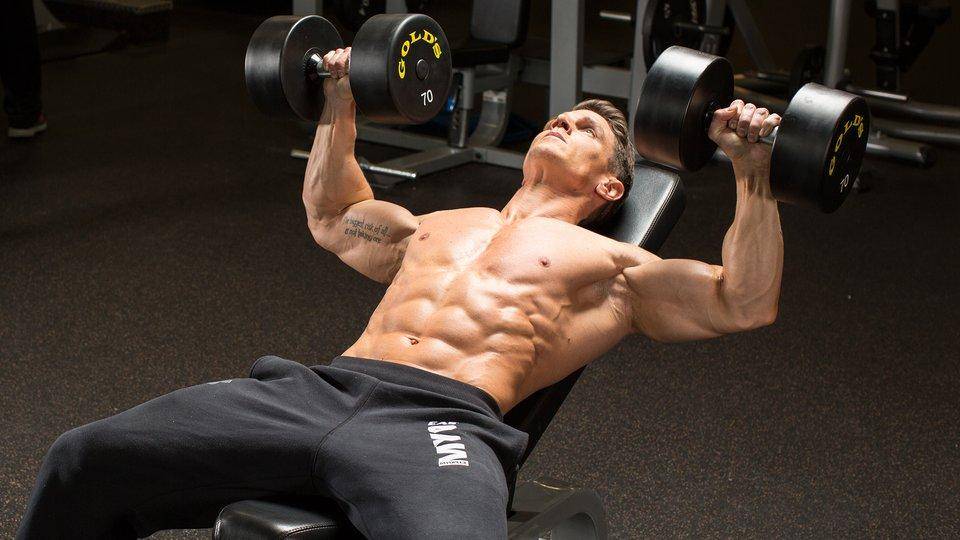
The Power of Progressive Overload in your routine
Progressive overload is a fundamental principle in strength training, vital for muscle growth and overall fitness progression. By consistently challenging your muscles with increased weight, varying repetition ranges, or altering rest times, you can stimulate hypertrophy, leading to bigger and stronger muscles. This method transforms your routine from static to dynamic, allowing for continuous enhancement.
One of the most effective ways to incorporate progressive overload is by gradually increasing the weight you lift. Start with a weight that allows you to perform a certain number of repetitions with proper form. Once you can comfortably complete high repetitions, increase the weight by a small percentage, typically around 5-10%. This approach prevents plateaus and ensures your muscles are consistently working harder.
- Increase the number of sets: If you’re cozy with your current weights, adding an extra set can significantly contribute to muscle fatigue and growth.
- modify your rep range: Shifting rep ranges can also keep your muscles adapting. For example, moving from 12-15 reps to a lower range of 6-8 reps with heavier weights can stimulate different muscle fibers.
- Change your rest periods: reducing rest times between sets can increase intensity and promote endurance while encouraging your muscles to adapt to new demands.
Incorporating various training techniques such as supersets, drop sets, or pyramid sets can also enhance your progress. These methods push your muscles beyond their comfort zone, compelling them to adapt and grow. As an example, a superset involves performing two exercises back-to-back with minimal rest, maximizing time under tension and increasing your workout’s intensity.
Tracking your progress is essential for effective implementation of progressive overload. Consider maintaining a workout log where you record weights, sets, and reps. This will not only motivate you but also serve as a baseline for future workouts. Understanding your progress helps in determining when to increase weights or adjust your training regimen, ensuring you continuously push your limits and achieve your muscle-building goals.
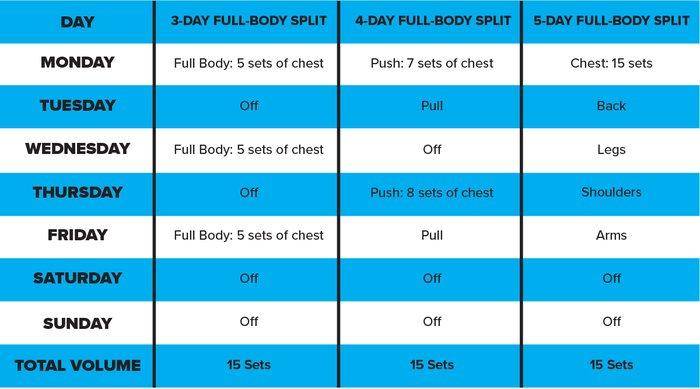
Tailoring Your Workout Frequency for Optimal Results
Finding the right balance in your workout frequency is essential to maximize muscle-building outcomes. Consistency is paramount, but it’s crucial to understand that the body’s response to training varies significantly from person to person. Some may thrive with a higher frequency, featuring several training days per week, while others may see better results with more rest days incorporated into their routine. Tailoring your workout plan allows you to listen to your body’s cues and adjust accordingly.
When devising your training schedule, consider the following factors that can influence your workout frequency:
- Experience Level: Beginners may benefit from 2-3 days per week, focusing on fundamental exercises to build a strong foundation.
- Recovery: pay attention to how your body responds after a workout. If you feel excessively sore or fatigued, you may need to reduce your training frequency.
- Goals: If you’re aiming for significant muscle gains, a higher frequency of 4-5 days may be more effective, targeting different muscle groups throughout the week.
- Workout Type: Compound movements that engage multiple muscle groups may require longer recovery, suggesting that alternate targeting (upper/lower body split) might be beneficial.
One effective strategy is to adopt a push/pull/legs split, which divides your workouts into three distinct focuses. This not only helps distribute training volume but also allows sufficient recovery time between sessions targeting the same muscle groups. For example:
| Day | Workout Focus |
|---|---|
| Monday | Push (Chest, Shoulders, Triceps) |
| Wednesday | Pull (Back, Biceps) |
| Friday | Legs (Quadriceps, Hamstrings, Calves) |
Another element to consider is periodization, which involves training cycles that progressively increase intensity and volume. Over time, you can experiment with varying the number of workout sessions each week based on feedback from your body. Such as, you might ramp up frequency during a strength phase and dial it back during recovery weeks. This approach promotes longevity in your training and helps prevent burnout.
Ultimately, the key to establishing your workout frequency lies in self-awareness and adaptability. Regularly evaluate your progress and feelings to identify what works best for you. Are you seeing gains? Do you feel energized or fatigued? Answering these questions will guide you in making informed decisions on adjusting your schedule for optimal muscle-building results.
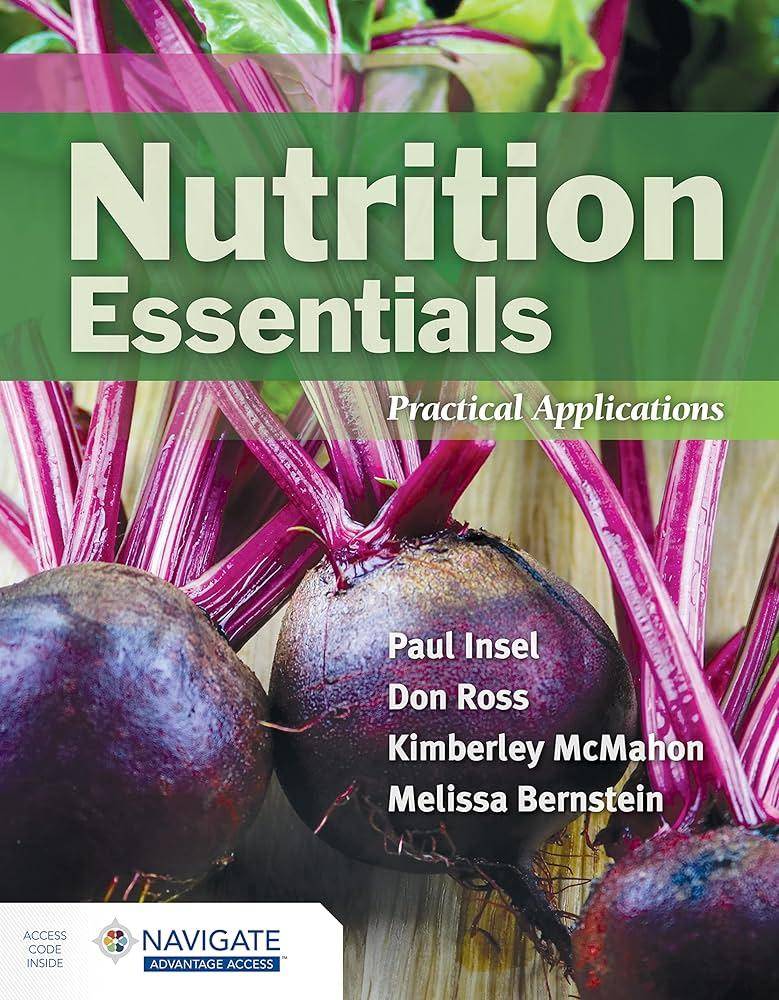
Nutrition Essentials to Complement Your Exercise Regimen
To maximize your muscle-building efforts,it’s crucial to nourish your body with the right foods. Proper nutrition not only supports recovery but also fuels your workouts. Focus on incorporating a variety of essential macronutrients that play distinct roles in muscle development.
Protein stands out as a key player in muscle growth and repair. Consuming adequate protein post-workout is vital for rebuilding muscle fibers that where stressed during exercise. Aim to include sources such as:
- Lean meats (chicken, turkey, and beef)
- Fish (salmon, tuna, and tilapia)
- Dairy products (Greek yogurt, cottage cheese)
- Plant-based options (tofu, lentils, and chickpeas)
Along with protein, carbohydrates are integral to replenishing glycogen stores depleted during workouts. choosing the right types of carbohydrates can provide sustained energy levels. Consider incorporating:
- Whole grains (quinoa, brown rice, and oats)
- fruits (bananas, berries, and apples)
- Starchy vegetables (sweet potatoes and corn)
Healthy fats also play a supporting role in your nutrition plan. They help regulate hormones that are crucial for muscle growth,including testosterone. Select from sources like:
- Avocados
- Olive oil and other oils
- Nuts and seeds
To provide a clear overview of essential nutrients and their recommended daily intake for muscle building, refer to the table below:
| Nutrient | Role in Muscle Building | Recommended Daily intake |
|---|---|---|
| Protein | Repairs and builds muscle tissues | 1.6-2.2g/kg of body weight |
| Carbohydrates | Provides energy for workouts | 3-6g/kg of body weight |
| Fats | Supports hormone production | 20-35% of total daily caloric intake |
Lastly, don’t underestimate the importance of hydration in your nutrition plan. Staying well-hydrated helps optimize performance during workouts, enhances recovery, and supports overall health. Ensure you’re consuming enough fluids throughout the day, particularly before, during, and after exercising, to keep your body functioning at its best.

Incorporating Rest and Recovery for Muscle Growth
Muscle growth is not solely dependent on the intensity of your workouts; it also hinges significantly on how well you allow your body to recover. During workouts, muscle fibers undergo stress and micro-tears, which is essential for growth. however, it is the time spent resting and recovering that actually facilitates this growth. Ignoring rest can lead to fatigue, decreased performance, and even injury, all of which can derail your fitness journey.
To optimize recovery, it’s critically important to prioritize sleep as one of the most underrated aspects of muscle development.Aim for at least 7-9 hours of quality sleep each night.During deep sleep,your body releases human growth hormone (HGH),which is crucial for muscle repair and growth. Creating a restful environment, practicing relaxation techniques, and limiting screen time before bed can significantly enhance sleep quality.
Incorporating rest days into your training schedule is equally essential. Giving your muscles a chance to recover for at least 48 hours after intense workouts can lead to better performance and muscle gains. This doesn’t mean you should be sedentary; consider active recovery options such as light walking, yoga, or low-impact activities that promote blood flow without stressing your muscles.
Nutrition plays a critical role in recovery as well. Ensuring a diet rich in essential nutrients can accelerate healing and growth. Focus on including:
- Protein: Vital for muscle repair
- Carbohydrates: Restores glycogen levels
- Healthy Fats: Supports overall health and inflammation reduction
Additionally, stay hydrated. Water plays a vital role in nutrient transport and recovery processes. A well-hydrated muscle functions optimally,which helps enhance performance and recovery.
Lastly, consider incorporating different recovery modalities into your routine. Techniques such as foam rolling, stretching, and massage therapy can aid in muscle recovery, reducing soreness and improving flexibility. You might also explore advanced options like cryotherapy or infrared saunas for their potential benefits in muscle recovery and growth.
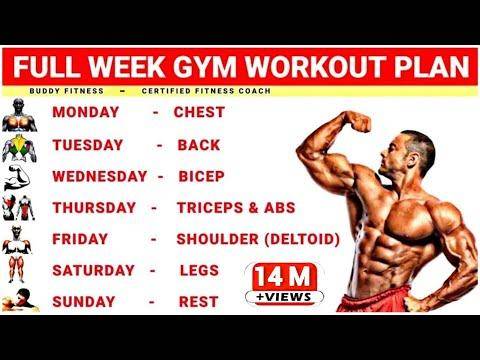
Adapting Your Routine for Different Fitness levels
When considering a fitness routine, it’s essential to tailor exercises based on individual levels of experience and capability. Beginners often benefit most from establishing good form and basic movements before progressing to more complex routines. This foundational phase can incorporate simple exercises such as:
- Bodyweight squats – Focus on proper posture to engage core muscles.
- Push-ups - Start on knees if full push-ups are challenging.
- Plank holds – Introduce this static exercise to build core strength.
Intermediate fitness enthusiasts should now expand their routine,incorporating moderate-weight lifts that challenge their growing strength. This phase can include:
- Dumbbell bench press - Enhances upper body strength while allowing for controlled movement.
- Barbell deadlifts – Crucial for developing lower back, glutes, and hamstrings.
- Pull-ups (assisted if necessary) – Powerful for back and arm development.
For those at an advanced level, it becomes critically important to focus not just on muscle building but also on muscle definition and overall conditioning. This could involve incorporating:
- Compound movements – Such as squats and overhead presses for maximum muscle engagement.
- Supersets - Pairing exercises like bench press with rows to maintain intensity.
- Periodization – Varying intensity and volume over time to achieve peak performance during specific cycles.
Sample Adapted Routine for Different Levels
| Fitness Level | Exercise Type | Example Sets & Reps |
|---|---|---|
| Beginner | Bodyweight | 3 sets of 8-10 reps |
| Intermediate | Moderate Weight | 4 sets of 6-8 reps |
| Advanced | Heavy Weight & Complexity | 5 sets of 4-6 reps |
regardless of fitness level, ensuring proper recovery is crucial. Each workout should be complemented by stretching,hydration,and appropriate rest days. This approach not only prevents injury but also aids in muscle repair and growth, facilitating progress across all fitness levels. remember, accomplished adaptation of your routine lies in listening to your body and making adjustments as needed.
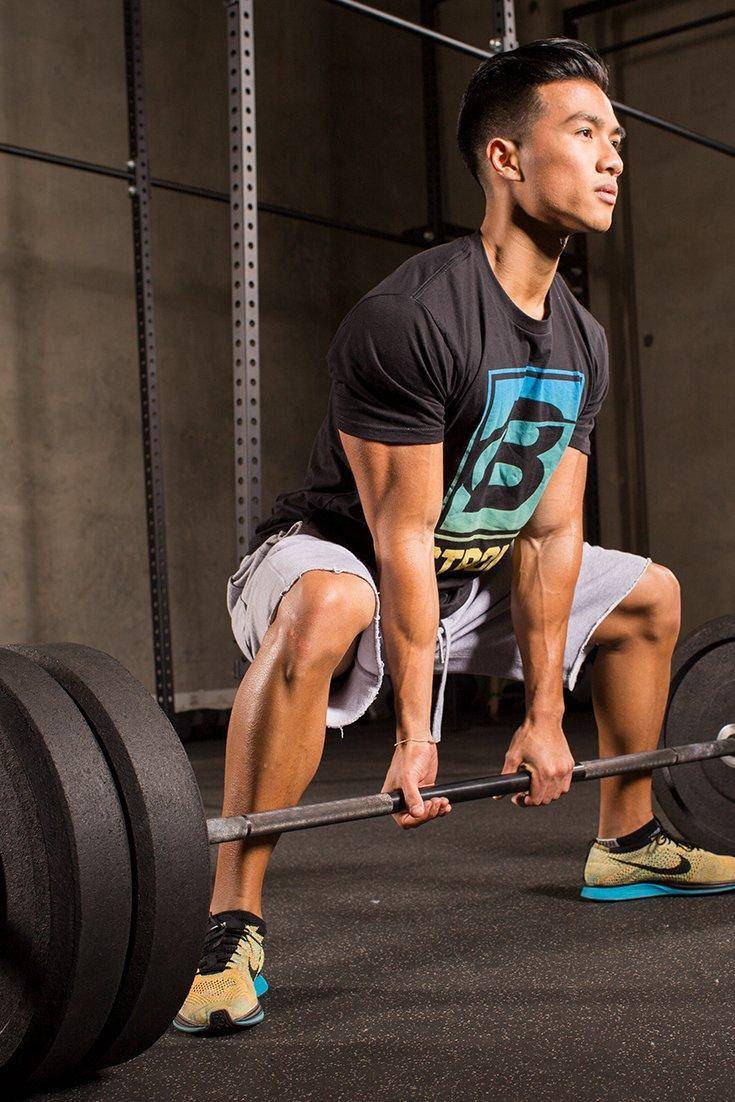
Exploring Advanced Techniques for Experienced Lifters
For those who have reached a plateau in their training, it’s essential to incorporate advanced techniques that challenge not only your muscles but also your overall lifting strategy. These techniques can help to break through barriers and spark new muscle growth. Here are some advanced methods to consider integrating into your workouts:
- Drop Sets: This technique involves performing an exercise to failure, then instantly reducing the weight and continuing for additional reps. Drop sets can significantly increase muscle fatigue and stimulate greater growth.
- supersets: Pairing two exercises that work opposing muscle groups (like biceps and triceps) can save time and enhance intensity. This method keeps the heart rate elevated and maximizes muscle exertion during your routine.
- Rest-pause Training: Instead of long breaks between sets,take brief pauses (10-15 seconds) to push out more reps after reaching failure. This technique allows lifters to maximize time under tension for each muscle group.
- Mechanical Drop Sets: Start with a heavier weight and perform an exercise with a particular grip or angle, then switch to a variation that is easier. This keeps the muscles engaged through different ranges of motion.
- Tempo Training: Altering the speed of your repetitions (slowly lowering and explosively lifting) can change the dynamics of the exercise, increasing control and building muscle through different muscular stress.
Incorporating these techniques not only adds variety to your workouts but also helps in understanding how different stimuli influence muscle growth. Here’s a comparison table illustrating a few common exercises and their associated advanced techniques:
| Exercise | Recommended technique | Benefits |
|---|---|---|
| Bench Press | Drop Sets | Enhanced muscle fatigue and growth. |
| Deadlift | Rest-Pause Training | Increased strength and endurance. |
| Squats | Mechanical Drop Sets | Diverse engagement of muscle fibers. |
| Pull-Ups | Supersets | Maximized intensity and muscle activation. |
| Shoulder Press | Tempo Training | Improved control and hypertrophy. |
When employing these advanced strategies, it’s vital to monitor your recovery closely. Progressive overload is a cornerstone of muscle growth; therefore, allowing adequate recovery is just as important as the workouts themselves. Balancing intensity with recovery can enhance overall performance while minimizing the risk of injury.
Lastly, always remember that nutrition plays a critical role in any training regimen. Advanced lifting techniques demand a diet rich in protein, healthy fats, and complex carbohydrates to provide the necessary energy and facilitate recovery. consider tracking your macronutrients to optimize your muscle-building efforts as you explore these innovative lifting techniques.

Staying Motivated: The Psychological Aspect of Building Muscle
When it comes to building muscle,motivation plays a pivotal role in your journey. The commitment to push through the discomfort associated with intense workouts is frequently enough dictated by your mental state.A positive mindset can serve as a powerful tool, transforming the arduous task of lifting weights into an enjoyable journey of self-improvement. Cultivating this mindset requires both conscious effort and strategic planning.
One effective way to maintain motivation is to clearly outline your goals. Establishing specific, measurable, achievable, relevant, and time-bound (SMART) goals can provide direction and purpose. Whether it’s increasing your bench press by a certain amount, achieving a certain physique, or simply becoming more consistent, having a defined target can help you stay focused. Consider writing your goals down and revisiting them regularly to track your progress.
Another psychological aspect to consider is the role of social support in fostering motivation. Engaging with a community—whether through a gym buddy, online forums, or social media groups—can not only provide encouragement but also create accountability. Sharing your milestones and challenges can further reinforce your commitment. Plus, celebrating small victories alongside others can create an additional layer of joy and satisfaction in your muscle-building journey.
Understanding your underlying motivation—the ‘why’ behind your desire to build muscle—can also help sustain your momentum. Are you training for aesthetic reasons, functional strength, or perhaps as a means to improve your overall health? Identifying your core motivation can keep you anchored when the journey becomes challenging. Whenever you feel your motivation waning, remind yourself of your fundamental reasons and visualize the outcomes you aspire to achieve.
embracing the concept of mindfulness in your workouts can significantly enhance your motivation and performance. focusing on the present moment during training—not only on the weights you lift but also on the sensations in your muscles—can deepen your engagement and satisfaction. Consider incorporating techniques such as breath control and visualization to enhance your workout experience, allowing you to build muscle not just physically, but mentally and emotionally as well.
Q&A
Q&A: Best Exercises for Building Muscle
Q: What are the most effective exercises for building muscle?
A: When it comes to muscle building, compound exercises are your best friends. Movements like squats, deadlifts, bench presses, and overhead presses engage multiple muscle groups, allowing for optimal growth and strength development. Incorporating these exercises into your routine can lead to significant gains over time.
Q: How many repetitions and sets should I aim for?
A: For muscle hypertrophy, a common approach is to perform three to four sets of 6 to 12 repetitions. This rep range is generally considered ideal for stimulating muscle growth. Though, the exact number can vary based on your fitness level and goals, so it’s essential to listen to your body and adjust accordingly.
Q: Is it necessary to use weights, or can bodyweight exercises be effective?
A: Bodyweight exercises can indeed be effective for building muscle, especially for beginners or those looking to enhance their functional strength.Push-ups, pull-ups, squats, and lunges can create substantial resistance and promote muscle growth when performed correctly and with intensity. Though, as you progress, adding weights can further challenge your muscles and accelerate growth.
Q: How often should I work out each muscle group for optimal growth?
A: A common strategy for muscle building is to target each muscle group at least twice a week. This can be achieved through full-body workouts or split routines, where you dedicate specific days to certain muscle groups. Adequate recovery between sessions is vital, so ensure you are allowing your muscles time to repair and grow.
Q: Should I focus on nutrition while building muscle?
A: Absolutely! Nutrition plays a crucial role in muscle growth. Consuming an adequate amount of protein is essential,as it provides the building blocks your muscles need to recover and enlarge. Aim for a balanced diet rich in whole foods, including lean proteins, healthy fats, and complex carbohydrates to support your training efforts.
Q: Are there any specific muscle-building myths to be aware of?
A: Yes, several myths can cloud the path to effective muscle building. One common misconception is that lifting light weights for high reps is the best way to achieve muscle definition. In reality, muscle growth often requires heavier weights with fewer reps.Another myth is that you need to work out every day to see results—rest and recovery are just as important for muscle growth!
Q: How can I track my muscle-building progress?
A: Keeping a workout journal can be a great way to track your progress. Note your exercises, sets, reps, and weights each session.Additionally, consider taking progress photos or measuring muscle circumference to visually see the changes over time.Regularly reassessing your goals and adjusting your workout plan can also keep you on the right track.
Q: What are some additional tips for consistency in a muscle-building program?
A: Consistency is key! Establish a workout schedule that fits your lifestyle and stick to it as much as possible. Staying motivated can also help; consider working out with a friend, joining a class, or following online programs. Lastly, keeping your workouts interesting by incorporating different exercises or changing your routine can definitely help maintain engagement over the long term.—
Enjoy your journey to muscle building! Remember that patience and dedication are essential ingredients for success in any fitness endeavor.
The Conclusion
In the expansive journey of building muscle, the right exercises serve as the building blocks of your fitness foundation. Each movement, whether it’s a heavy deadlift or a meticulous squat, contributes to a tapestry of strength and resilience that can transform not only your physique but your overall well-being. Remember, consistency is the key that unlocks progress; combine it with proper nutrition and recovery, and you’ll set the stage for remarkable growth.
As you embark on or continue your muscle-building adventure, consider tailoring these exercises to fit your individual goals and fitness level. Listen to your body, stay curious, and don’t hesitate to seek guidance from qualified professionals when needed.With each rep and set,you’re not just sculpting muscle but also fortifying valuable habits that will last a lifetime.
Now, with this arsenal of exercises at your disposal, go forth and embrace the strength within. Your future self will thank you. Happy lifting!

